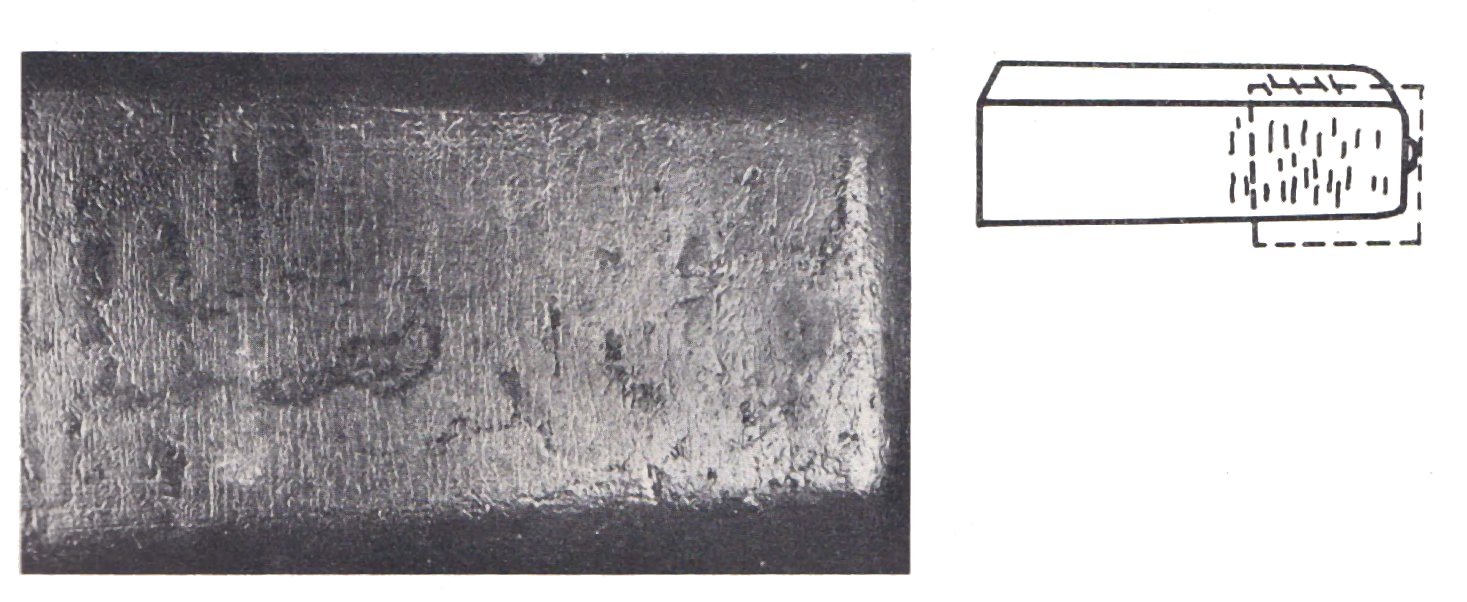
Alphabetical Index
Keyword Search
Casting Defects
Ingot Defects
Slab Defects
Drawing Defects
Forging Defects
Rolling Defects
Bearing Defects
Coating Defects
Corrosion Defects
Fractography
Heat Treatment Defects
Machining Defects
Other Defects
Pipeline Defects
Polishing Defects
Rail Defects
Tool Steel Defects
Welding Defects
Internal Defects
Surface Defects
Internal + Surface Defects
Contact Us
Help
Home
Rippled surface - Ingot defects

Figure 1: Rippled surface at the top end of a duodecagonal ingot of a plain-carbon killed steel. Note also longitudinal corner crack.

Figure 2: Rippled surface on a bottom-poured ingot of alloy steel.
Defect name: Rippled surface
Record No.: 300
Type of defect (Internal/Surface): Surface
Defect classification: Ingot defects
Steel name: Steel
Steel composition in weight %: No data.
Note: A series of slight peripheral undulations on the ingot surface caused by a rapid succession of layers
of frozen metal forming near the mould walls, and becoming engulfed in turn as teeming proceeds. The defect is characteristic of metal which has been teemed at a too low temperature, or, where the temperature is normal, at a too low teeming rate. It may also occur when the mould surface condition is such that a very heavy and variable drag on the rising metal is caused. Examples are shown in Figs. 1 and 2. In slight forms, a rippled surface is not considered to be a defect, as it has no deleterious effect on the rolled product. It can be considered as a mild form of lapping, and rippled ingots
are often lapped towards the top end. The defect is sometimes termed 'crusting and lapping'.
Reference: Not shown in this demonstration version.